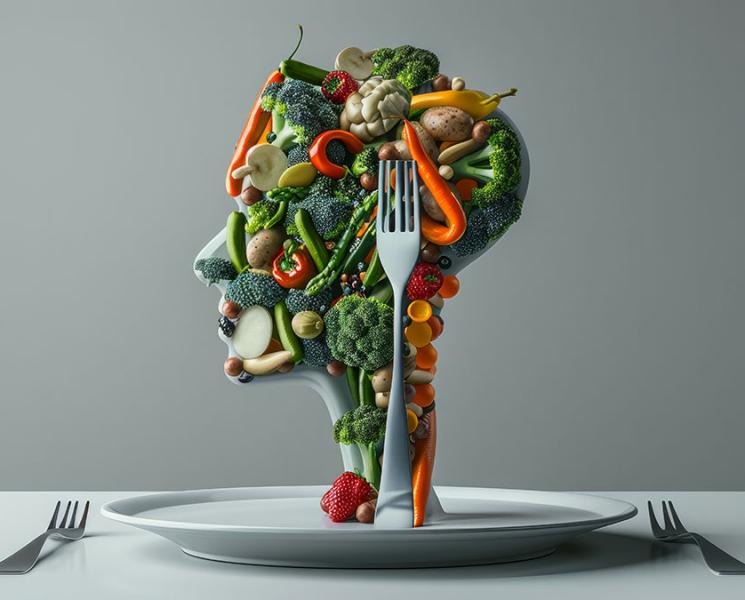Five registered dietitian nutritionists shed light on their food vices and provide tips on how to indulge while maintaining a healthy diet.
A longer version of this article originally appeared on Livestrong.com.
You probably think that nutritionists have it all figured it out when it comes to health and nutrition. But even the savviest of nutrition experts have to learn to manage their food vices. (Yes, we all have them!)
1. Baked Goods
Fresh-baked treats are pretty much impossible to resist for most of us. “I love the aroma of baked goods in my home; it always brought my kids to the kitchen. But my three growing boys were able to afford the calories of seemingly unlimited muffins and cookies. While I, on the other hand, had to keep an eye on portion sizes,” says Bonnie Taub-Dix, RDN, author of “Read It Before You Eat It.” In addition to portion control, improving the quality of the ingredients is key to turning a dietary disaster into a somewhat healthy snack. “I swap in whole-wheat pastry flour for white bleached flour and mashed avocado for butter,” Taub-Dix says. “I also make mini muffins instead of gigantic ones so that I don’t overindulge.”
2. Late-Night TV and Snack Binging
We’ve all been there. You binge-watch a TV series far into the night, telling yourself over and over, “Just one more episode, and then I’m going to bed.” Dinner was hours ago and you’re feeling a little hungry, so it’s time to rifle through the pantry for something fun to eat. This is an issue Carolyn O’Neil, M.S., RDN, author of “The Slim Down South Cookbook,” says she’s struggled with. “Two bad things are happening here: not getting enough sleep and consuming excess calories. So when I watch a TV series now, I brew a pot of chamomile tea and sip it slowly while the drama unfolds. And maybe I’ll have one small cookie,” she says. “The chamomile tea makes me feel sleepy and helps me save that next episode for tomorrow.”
3. Afternoon Munchies
It’s all too common — that afternoon energy slump that makes us reach for a pick-me-up. “As my attention span wanes in the afternoon I feel like grabbing a snack, even though I am really not ‘hungry’ in terms of my body needing fuel. It’s more that my body needs a break from my work routine. As I get older, I need fewer calories, so I can not afford to take in those extra foods that I really don’t need,” says Sharon Palmer, RDN, author of “Plant-Powered for Life.” The best thing to do if you’re not physically hungry is to give yourself a break in other ways. “I’ll often have a nice cup of tea, a short stretch and walk for 10 minutes as a pleasant diversion,” Palmer says.
4. Wine While Cooking Dinner
Sipping wine and cooking dinner seem to go hand in hand. But what happens when that wine glass gets topped off multiple times? “Over the years my ‘one’ glass of wine while cooking dinner started becoming more. While I certainly don’t regularly drink to excess, even four ounces (half a cup) more of red wine is a whopping 100 extra calories,” says Regan Jones, RDN, founding editor at HealthyAperture.com. “This year I’ve let go of the idea that I ‘need’ a glass of wine to enjoy while cooking dinner. Instead, I focus on talking to my kids about their day, snacking on something healthy or even sipping on sparkling water. I save the wine — and the calories — for nights out with my husband and friends. I see a difference around my waistline and have even noticed improvement in my sleep.”
5. After-Dinner Food Jags
For many, eating healthy during the day comes pretty easily. But once dinner is over, an evening “food jag” kicks in that does not mesh well with their healthy eating habits. “Lately, every night after a filling dinner I love to sit down with a mini bowl of ice cream topped with a drizzle of chocolate syrup and whipped cream,” says Misti K. Gueron, M.S., RDN, medical nutrition therapist and food coach for the Khalili Center. Since this food jag has nothing to do with hunger, but rather provides emotional support, Gueron has figured out a few ways to tackle it. “Sometimes I will do a different activity to replace the comfort eating. This includes calling a girlfriend, taking a bath or reading. Other times I will replace my ice cream with something a bit healthier — like a cup of light hot cocoa,” says Gueron.
Do you identify with any of the challenges in this article? Leave a message — I’d love to hear from you!





